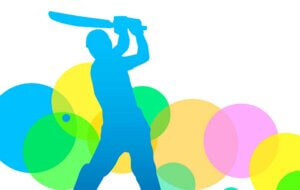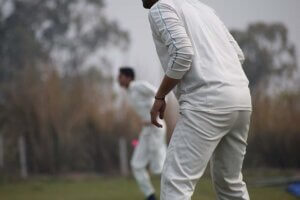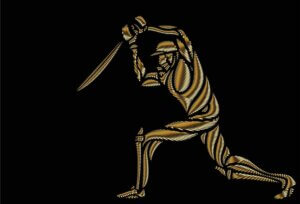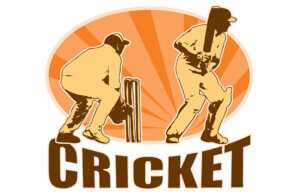What Is Googly in Cricket?
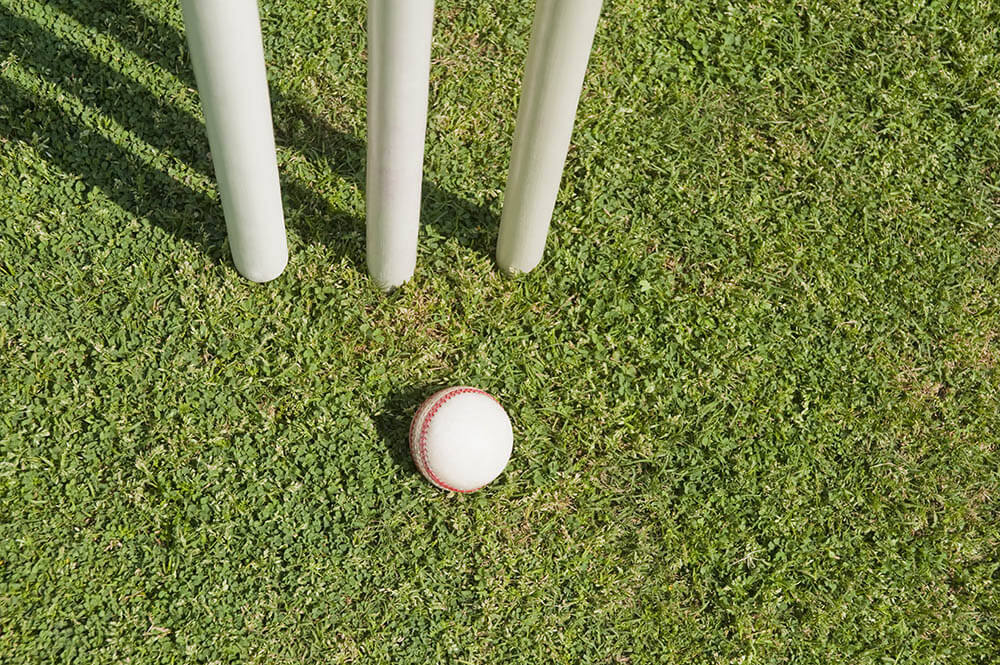
Tests
tps://bit.ly/3PVj94R">
Cricket has always been called a batman’s game. Bowlers have had a need to find new ways to dismiss batsmen throughout the history of cricket. This has led to many inventions in the bowling department since the inception of cricket. Googly stands right there, at the top among other inventions such as the reverse swing for fast bowlers.
Confusion is the result of deception is what they say. Well, googly is a bowling technique in cricket that has been invented to fulfill the need to confuse a batsman in order to throw his wicket away. Since googly’s invention, back in 1900, it has been widely used by spinners. In a scene from the 1987 movie ‘Hope and Glory’, a father passes on the secret of googly to his son, saying: “When you tell a lie, you hope to get away with it. When someone else does, you want to find them out. A googly is similar to a lie which a good batsman wants to find out and a good bowler wants to hide it.”
Before understanding the concept of googly, it is important to take a closer look at the history of the invention. Let’s go back in time and see how the googly technique has been developing and increasing in popularity and eventually find out how to bowl the famous googly.
History
Contents
History
ck the pages of cricket history, one will find the first reference of the googly in a game between Middlesex and Leicestershire held at Lord’s in July 1900. English cricketer Bernard James Tindal Bosanquet, playing for Middlesex at that time, bowled an unusual delivery to Leicestershire batsman Samuel Coe which deceived the latter and got clean bowled on 98. Bosanquet invented the googly back in 1897 while playing Twisti-Twosti, a tennis ball game with an objective to bounce a ball on the table so that your opponent could not catch it. After practicing it with a softball, Bosanquet used a cricket ball in 1899 in a game against Oxford. It took 2 years for the googly to make its international debut in a game against Australia in 1902.Knowing little about the technique, Bosanquet persuaded his friend, writer Plum Warner, not to mention the googly in his articles. However, Bosanquet’s rise to popularity in English cricket made him write about the new delivery eventually to draw the public attention to his invention At that time, the googly was referred to as a bad’un or a wrong’un. It was also called a Bosie or Bosey to honour Bosanquet. His Middlesex team partner Reggie Schwartz learned the tricks from him. After migrating to South Africa, Schwartz helped it become more popular at the world level.
What Is a Googly?<What Is a Googly?
a bowling technique or one can say most prized weapon in leg spinner’s artillery in which a ball is spun in the opposite direction to a regular leg-break. When a right-arm leg-break bowler bowls the delivery, it spins from right to left, while his Googly spins from left to right, in other words, towards the inside for a right-handed batsman.
On the other hand, a left-arm unorthodox, or chinaman, spins the googly away from the right-handed batsman from right to left. In simple words, the googly is a clockwise spin when bowled by a right-arm leg-break bowler and is anticlockwise when bowled by a left-arm leg-break bowler.
Generally speaking, the ball spins in the opposite direction from where it is supposed to, confounding the batsman in the process. A well-bowled googly is perfectly aimed at the stumps and, if missed by the batsman, results in him getting bowled.
How to Bowl a GooglyHow to Bowl a Googly?
bowling is very difficult and it requires a lot of practice. The line and length of the delivery are equally important, if not more, compared to the skills needed to pull off a googly. As the ball has to be spun in the opposite direction, the mind has to be made up by assessing the condition of the pitch, consciousness of the batsman and the stage of the game. If all the boxes in the checklist are ticked, only then the execution will be likely to bring the desired results.
Bowlers generally set up the batsmen by bowling leg-breaks and just slipping in a googly in between. Let’s take a closer look at the bowling technique to bowl a googly.
The Grip:
To b
The Grip:
ave to hold the ball in your hand similar to a normal leg-break with its seam parallel to the palm. In this 2-fingers-up-2-down holding technique, put the top joints of the index and middle fingers on the seam. Keep a little gap between the fingers to hold the ball comfortably. The ring finger should be bent and slightly wide from the middle finger to rest the ball and the thumb on the other hand close to the index finger. There should not be any pressure put on the ball by the thumb. The little finger should also be bent to support the ring finger. Keep some gap between your palm and the ball. Basically, the positioning of your fingers around the ball is paramount when it comes to bowling the googly.The Run-up:
Th
The Run-up:
sn’t make much difference while bowling the googly. So, a regular short run-up of 10-12 steps with minimal side movement is perfect to bowl the googly. The more the side movement, the more the chances of bowling the wrong line.The Wrist:
The w
The Wrist:
e most important aspect while bowling the googly. The coordination of the wrist and fingers give the spin to the ball. Flexibility in turning the wrist will fetch the maximum results for a bowler. Fingers exert the spin on the ball but a flexible wrist enhances the rotations on the ball which helps in ball dipping greatly before the batsman is given some flight in the air. The dip adds its bit to the deception of the googly.The Release:
The
The Release:
ed 180 degrees towards the ground so that the batsman can see the back of your hand. This makes it more difficult to predict. The seam should be pointed towards the leg slip or fine leg. Once the position is taken, move the wrist from right to left while delivering the ball. The middle finger helps the ball spin towards the batsman. The ring finger and little finger help rotate the ball towards the pointed direction. To get more flight, try to toss the ball a bit up in the air, above the batsman’s eye level. This has two advantages. Firstly, the batsman needs to move his head to look at the ball. Secondly, the rotation and flight will make the ball land a little farther from the batsman than he has anticipated.The difference between bowling a regular leg-break and a googly is the direction of the palm and the seam. In case of a regular leg-break, the arm is close to the body and the seam is pointed towards the first slip. When it comes to the googly, the arm is kept a little wide with the seam directing towards the leg slip.
One can bowl the googly with the regular leg-break action too. In this case, the spin is imparted by the fingers at the point of the release and not the palm. This makes far more difficult for a batsman to guess the delivery compared to the traditional googly approach as there is no apparent change in the bowling action.
The Pitch Area to Target thThe Pitch Area to Target the Googly:
sman, the googly should be bowled into specific areas of the pitch. Therefore the googly should be pre-planned. The more right areas are targeted, the more difficult the googly is to predict. For a successful result, the batsman should be touted to play a drive by bowling a fuller delivery. The line should be kept slightly outside the off stump but not too wide to give the batsman time to predict the googly. The target for the googly should always be to get the edge or hit the stumps. If bowled too wide of the off stump, the batsman may get deceived but the ball may not come back enough to hit the stumps.
Moreover, bowling the googly at a good length increases chances of getting edges of the bat as the batsman tries to drive thinking of regular leg-break deliveries. This is one of the reasons to stick to the line suggested earlier. If the ball is kept wide, it will not give you edges and the batsman can also easily cut to get runs on the board. Similarly, if the googly is bowled between the off stump and the middle stump, its probability of getting slogged increases. Further down the leg, the googly has no purpose and most of the time goes wide, resulting in an extra run for the opposition. This line will be helpful only when a left-handed batsman is playing at the other end. The same technique is to be applied when a left-arm leg spinner bowls the googly to the left with a right-handed batsman respectively.
The Field Setup:
Th
The Field Setup:
googly is to get the edge. For that, you need fielders in the right position. It is always recommended to keep a slip in place when you plan to bowl the googly. Furthermore, if you are planning to bowl a flighted googly, it is advisable to keep a fielder on the cover and the extra cover to catch the ball. Most of the dismissals from the googly are batsmen getting bowled or trapped before wicket and you don’t need any fielders for that, although, some fielders around the stump and silly point or short leg might add some pressure on the batsman.Use of the googly in differenUse of the googly in different formats:
ricket is all about patience and perseverance applicable to both batsmen and bowlers. In Test cricket, if the batsman has come to the crease, you can keep the direct approach to surprise him with the googly. This makes him unsettled and he tends to make mistakes. On the other hand, if the batsman is well-settled, the best way is to bowl him regular leg-breaks for the first few overs. Once the batsman gets used to hitting the ball in the same area, switch to delivering googlies. The batsman’s concentration plays a key role in getting the wicket. If the batsman isn’t watching your wrist movement, then the chances of him getting out increase. The lower-end batsmen with weak techniques are prone to get dismissed to googlies while trying to hit the ball than to defend it. Once the cracks appear on the latter half of the Tests, the pitch helps googlies more.
One-Day International
The
One-Day International
oogly is way different compared to the one in Tests. In the limited-overs format, the batsman always wants to score at a high pace and tends to play poor shots many times. Therefore, in ODIs, it is always better to introduce this secret weapon of googly once or twice in an over. This frustrates the batsman, forcing him to play unorthodox shots which results in wickets on most of the occasions.T20 International
This for
T20 International
ard to score the maximum number of runs. It is all about a mixture of orthodox and unorthodox shots. As there is very little time to get concentrated, even a slight change in deliveries rattles the batsman on the strike. Therefore, a wisely bowled googly is always important in a crunch situation. A googly after a ball or after 2 or even sometimes 3 balls is what is required to get the batsman dismissed.Things to look out for:
As
Things to look out for:
hing the googly in the right area is the most important factor for an effective googly. So, accuracy is a thing to look out for. As our wrist is turned 180 degrees to stop the batsman predicting the googly and the arm is turned around, the googly ball comes slower compared to the regular deliveries. This makes it easier for the batsman to predict the googly and to hit long with the spin. While bowling the googly the hip, arm, wrist, and finger movements of the bowlers cause minute stress in the shoulder joint. This can be tackled with more practice and shoulder strength training.Difference between Googly and DoosDifference between Googly and Doosra
with ‘doosra’. The easiest way to point out the difference between them is the bowler’s action. What googly for right-arm leg-spin or left-arm unorthodox bowlers is, doosra is for right-arm orthodox and left-arm off-spin bowlers. In case of a doosra, the ball spins away (anticlockwise) from the right-handed batsman and towards (clockwise) the left-handed batsman.
Googly Syndrome
With practice, a
Googly Syndrome
be obtained in bowling googlies. However, it has its own disadvantage also. An Australian legend and a leg-spinner has once said: “I tried to spend a lot of time developing the googly. Unfortunately for me, I tried to develop it to the detriment of my legspinner. It took me six months to get my legspinner back.” With too much practice, one can lose control over regular leg-breaks and start bowling googlies more often. This has been called the ‘googly syndrome’ by leg spinners and coaches. It makes the batsman more comfortable to play the shots with the spin as he treats the legspinner more as an off-spinner and plays shots with the spin. This can be avoided in practice. If you bowl 5-6 overs as regular leg spins in nets followed by one or two googlies, it will help you solve this problem.Some famous Googly Bowlers
The technique
Some famous Googly Bowlers
Asian spin culture in particular. Anil Kumble stands out the most among the rest. With 619 wickets in 132 Tests, he has been known for his quick googlies. Abdul Qadir, Subhash Gupte, Billy O’Reilly are few others who have rocked the international cricket with the combination of regular leg spins with googlies. Rashid Khan, Yasir Shah, Adil Rashid, Kuldeep Yadav are some of the current leggies who are experimenting with this technique.Conclusion
The googly is an unconventional
Conclusion
et used by leg spinners to deceive batsmen who, taking the regular approach while selecting shots, end up getting bamboozled. Throughout the history of cricket, the googly has played an important role in crucial stages of difficult games and has changed their outcomes. A perfect combination of a regular spin with googly is the deadliest combination.Practice is key to developing accuracy in bowling the googly. The trick is to start with a tennis ball and then move to the hardball once the flexibility is improved. We hope this article has helped you understand the intricacies of this great cricketing invention. Go on then, bowl a few wrong’uns.

